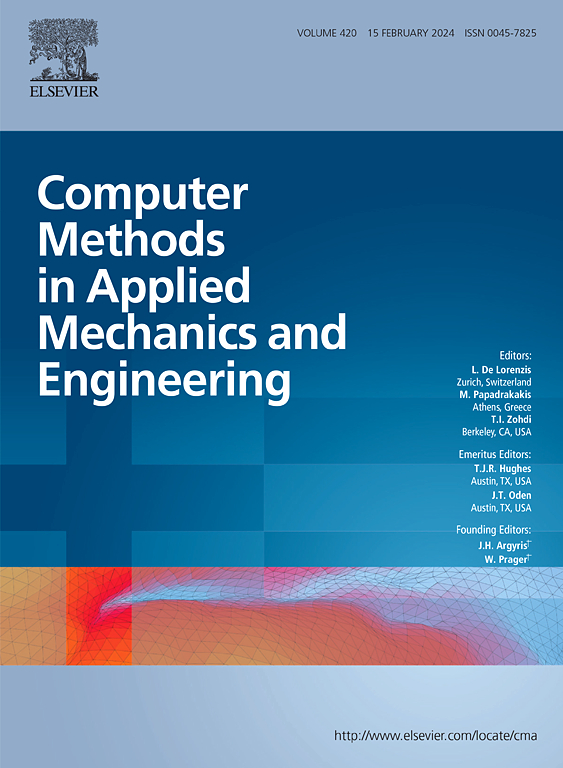A time step-size computing arc-length method for the phase-field hydraulic fracture model
IF 6.9
1区 工程技术
Q1 ENGINEERING, MULTIDISCIPLINARY
Computer Methods in Applied Mechanics and Engineering
Pub Date : 2024-12-31
DOI:10.1016/j.cma.2024.117687
引用次数: 0
Abstract
The phase-field hydraulic fracture model entails a non-convex energy functional. This renders a poor convergence behaviour for monolithic solution techniques, such as the Newton–Raphson method. Consequently, researchers have adopted alternative solution techniques such as the staggered solution technique and the Newton–Raphson method with convexification via extrapolation of the phase-field. Both methods are robust. However, the former is computationally expensive and in the latter, the extrapolation itself is questionable w.r.t regularity in time. In this work, a novel dissipation-based arc-length method is proposed as a robust and computationally efficient monolithic solution technique for the phase-field hydraulic fracture model. Similar to brittle fracture in force driven mechanical problems, constant flux driven hydraulic fracture processes are also unstable. Furthermore, due to the constant flux loading in hydraulic fracturing problems, scaling of the external force is not possible. Instead, the time step-size is considered as the additional unknown, augmenting the arc-length constraint equation. The robustness and computational efficiency of the proposed arc-length method is demonstrated using numerical experiments, where comparisons are made with the staggered solver as well as the quasi-Newton BFGS method.
相场水力裂缝模型的时间步长计算弧长方法
相场水力裂缝模型包含一个非凸能量泛函。这使得单片解技术(如牛顿-拉夫森方法)的收敛性很差。因此,研究人员采用了交错解决技术和牛顿-拉夫森方法等替代解决技术,通过相场的外推进行凸化。这两种方法都是健壮的。然而,前者在计算上是昂贵的,而后者的外推本身在时间上的规律性是值得怀疑的。在这项工作中,提出了一种新的基于耗散的弧长方法,作为相场水力压裂模型的鲁棒性和计算效率高的整体求解技术。与力驱动的力学问题中的脆性断裂类似,恒流量驱动的水力断裂过程也是不稳定的。此外,由于水力压裂问题中的流体载荷是恒定的,因此不可能对外力进行标度。相反,时间步长被认为是额外的未知数,增加了弧长约束方程。通过数值实验验证了该方法的鲁棒性和计算效率,并与交错求解法和准牛顿BFGS法进行了比较。
本文章由计算机程序翻译,如有差异,请以英文原文为准。
求助全文
约1分钟内获得全文
求助全文
来源期刊
CiteScore
12.70
自引率
15.30%
发文量
719
审稿时长
44 days
期刊介绍:
Computer Methods in Applied Mechanics and Engineering stands as a cornerstone in the realm of computational science and engineering. With a history spanning over five decades, the journal has been a key platform for disseminating papers on advanced mathematical modeling and numerical solutions. Interdisciplinary in nature, these contributions encompass mechanics, mathematics, computer science, and various scientific disciplines. The journal welcomes a broad range of computational methods addressing the simulation, analysis, and design of complex physical problems, making it a vital resource for researchers in the field.

 求助内容:
求助内容: 应助结果提醒方式:
应助结果提醒方式:


